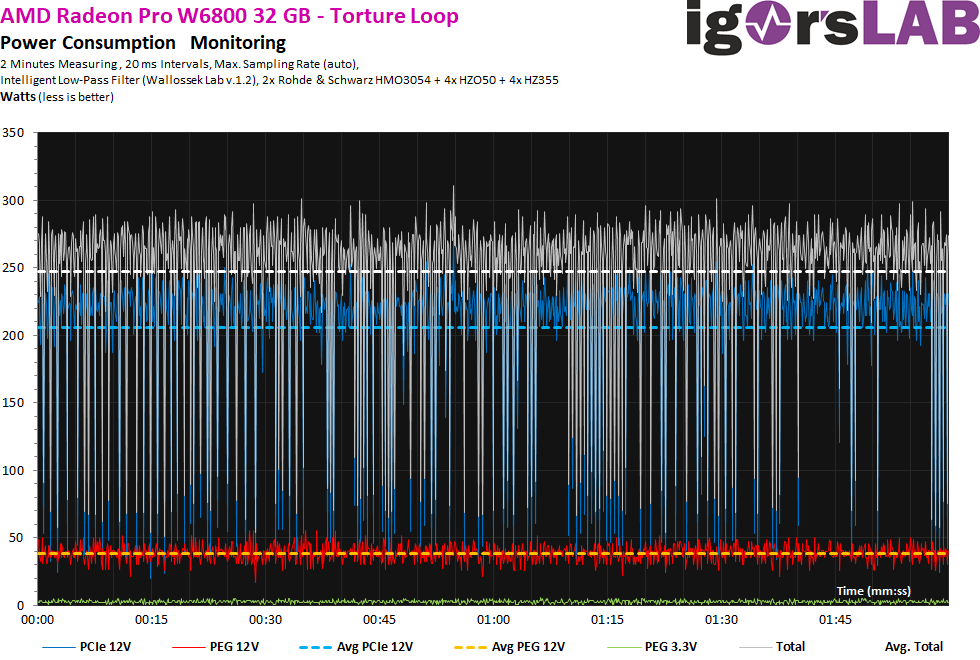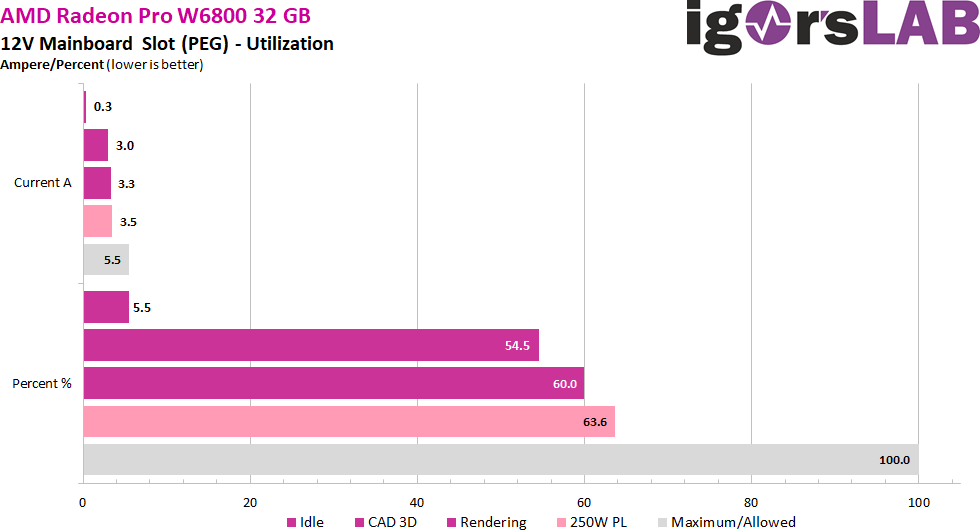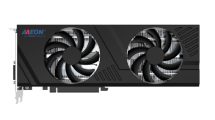Let’s start with the individual loads and the resulting power consumption in each case. The approx. 11 watts in idle are okay, after all the fan is also running permanently. The rest is in the gradation as before. With just under 250 watts, the card isn’t a costly one, but it’s still within the bounds of what’s bearable and, on balance, more efficient than the Radeon Pro W5700.
Standard compliance at the motherboard slot (PEG)
Now let’s look at the load of the motherboard slot, which is specified by the PCI SIG with 5.5 Amps. This results in a maximum power of 66 watts at 12 volts. You can see very clearly that under normal load exactly 3 to 3.5 amps are reached, which is absolutely exemplary.
Power supply load in detail
Before we deal with the load peaks and the power supply recommendation in the next chapter, I have recorded two minutes higher resolution for you, whereby here the interval is at the magic 20 ms, which is already interesting for power supplies (shutdown). The following graphics include a CAD 3D loop (3ds Max) and the Torture Test (Furmark, OpenGL).




- 1 - Introduction and Technical Details
- 2 - Test System and Methods
- 3 - AutoCAD 2021
- 4 - Solidworks 2021 (No FSAA)
- 5 - Solidworks 2021 (FSAA Enabled)
- 6 - Inventor Pro 2021
- 7 - 3ds Max, Catia,Creo, Energy
- 8 - Maya, Medical, Siemens NC, SW 2017
- 9 - DirectX 11, DirectX 12, Vulkan, OpenGL and DXR
- 10 - AI and Compute
- 11 - Rendering
- 12 - Power Consumption in Detail
- 13 - Transients and PSU Recommendation
- 14 - Clock Rate, Temperatures, Fan Speed and Noise
- 15 - Summary and Conclusion




































Kommentieren